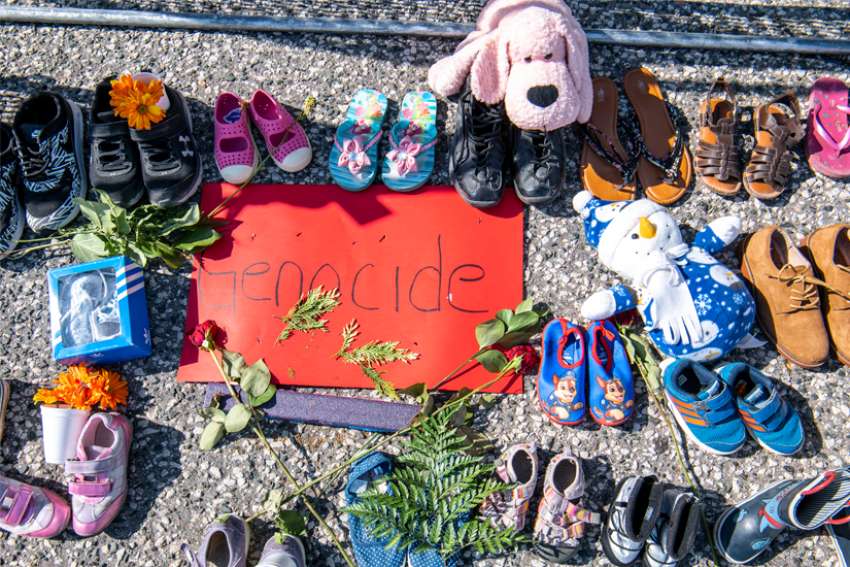It’s a special form of body blow to see the landscape of your earliest memories placed in evidence as a site of brutal genocide against Indigenous people.
But the triple crown of knee bucklers is having both of the above tied to your Catholic faith as an indictment of its historic neglect, at best, and its oblivious cruelty, at worst, toward Christ’s little ones.
So perhaps it’s not surprising that my first response was to find inconceivable the May 27 report of a burial site containing remains of an estimated 215 Indigenous youth in Kamloops, B.C. Inconceivable? Try impossible. Denial, we know, is a natural first refuge for the human mind in shock.
Even when it quickly became obvious that the story was unquestionably legitimate, I took recourse in flaws of the journalism itself: the purplish emotionalism, the too-immediate acceptance of the discovery account as delivered, the basic questions that went unasked.
There were repeated references in the reportage, for example, to some of the dead children being as young as three years old. No one seemed to ask what a three-year-old might have been doing at what started out in the late 19th century as an “industrial” training school and was later rechristened as part of the Church-run Indian Residential School system. Nor did anyone appear to ask how the new ground-penetrating radar used to discover the grave could identify with such specificity the ages of skeletal remains mingled in earth for up to 140-odd years. In Montreal there is a mass grave said to contain up to 6,000 Irish immigrants who died of typhus on arrival in 1847. Bones have been unearthed over the years but never, to my knowledge, with ironclad ages attached.
Likewise, the mystery of how the grave itself remained unknown for so long went unparsed. I grew up in Kamloops doing all the things of childhood, lived there post-university and was a reporter for the local paper in the early 1980s. Not once was there a whisper of a hint of a rumour of the existence of such a genocidal burial site, although the school itself was significantly integrated into the town.
I remember being taken as a child to watch pupils from the school perform as fundraising for travel they took to demonstrate their traditional dances. The building itself was visible just across the South Thompson River from Kamloops’ most popular park. The First Nations land on which it stood was both leased by local businesses for industrial use and bisected by a main road that led to the highway. How, it seems reasonable for a reporter to ask, was a grave filled, unnoticed, with 215 bodies in such circumstances?
Yet we now know through technology, it was. That simple fact penetrates even the evasive mind of the hometown boy turned journalist. Adding the Catholic dimension makes the pain border on unbearable.
For no matter how many fair and justified questions are adduced, there is a plain-faced reality that cannot be avoided. By its own admission, over and over again, our Church has shown itself, among its manifold graces and glories, to be monstrously efficient at hiding the sins and wickedness of its human adherents and leaders. Parishes and dioceses throughout North America remain riven with revelations of priestly sexual abuse and revolting cultures of cover-up. Across the sea, the Irish Church for a century or more flagrantly abused children in unimaginable, unspeakable, uncountable ways. The bodies there, too, have emerged from collective graves.
Yes, it’s true, those wrongs have been compiled against us for use as propaganda. No denying that. And, yes, the specifics are often historic: the dark deeds happened long ago or far away. Such caveats count, but they still leave us falling woefully short in the eyes of our fellow human beings, if not of God.
For here’s the home truth. Each time these crimes stain us they go to the heart of who and what we are. The questions pack a wallop: Why should we be trusted now? How can we ever be forgiven again?
(Stockland is publisher of Convivium.ca and a senior fellow with Cardus.)


